Deep Plane Lifting: Innovation in Facial Aesthetic Surgery
Dr. Alejandro Mazarro explains it in detail
The Deep Plane Facelift has become one of the most innovative and effective techniques in facial aesthetic surgery. Thanks to the technique used, not only the skin is repositioned but also the underlying muscles and connective tissue of the face, allowing for more natural and long-lasting results compared to traditional lifting techniques.
In the following video, Dr. Alejandro Mazarro, maxillofacial surgeon in Barcelona and specialized in this technique explains everything you need to know about the Deep Plane Facelift, what it consists of, how it differs from traditional methods and the steps involved in the surgery.
What is the Deep Plane Facelift?
Deep Plane Lifting or Facial Rhytidectomy is a facial rejuvenation technique that works on the deepest layers of the face. Unlike traditional lifting methods that tighten the skin, this technique allows the underlying muscles and tissues to be repositioned, achieving a more natural and long-lasting appearance. In addition, it can improve problem areas such as sagging in the neck and sagging cheeks more effectively.
Discover the before and after of the Deep Plane Facelift
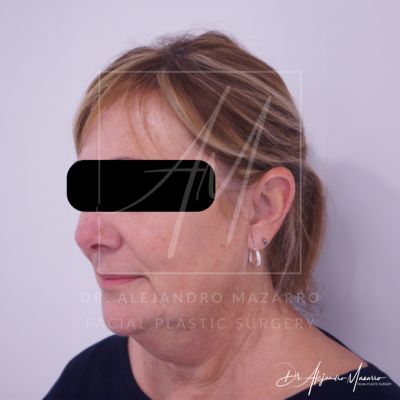

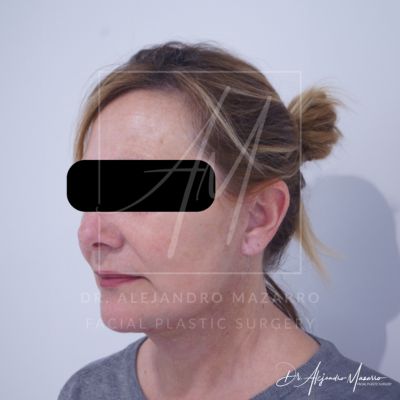






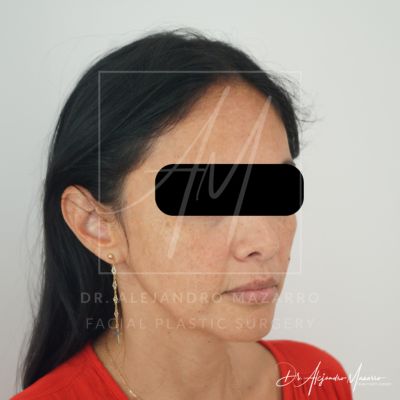

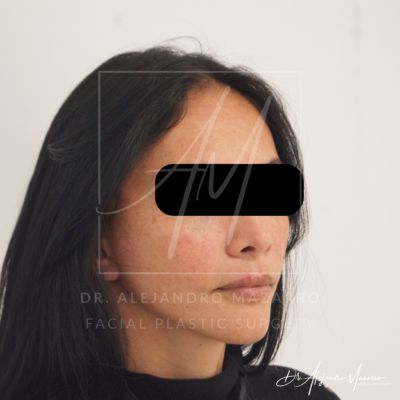
Basis of the Deep Plane Facelift
This type of facelift is the only one that allows the tissues to be repositioned to their original location.. The basis of this technique is the manipulation of the deep facial planes. This implies that, instead of performing the lifting only on the skin, we work on the muscle layers and facial ligaments, where the Deep Plane Lift acts more effectively. It works below the SMAS, in the deep layers, where the facial muscles and ligaments that support the structure of the face are located.
The results are longer lasting because the rejuvenation depends not only on skin tightening, but on a complete restoration of the facial anatomy.
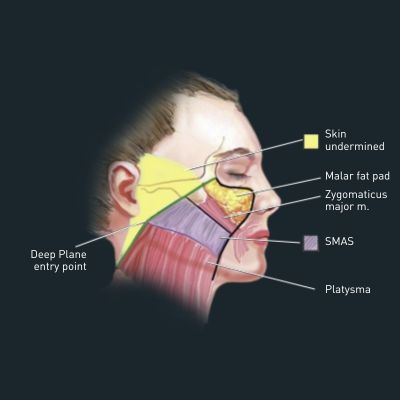
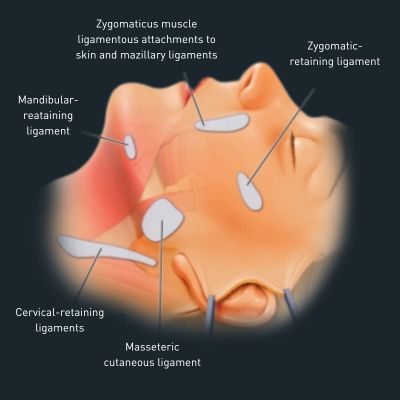
Why is deep plane lifting better than classic lifting techniques?
- More natural results: By working with the facial muscles, the final appearance is less “tight” and more harmonious.
- Increased durability:The effects of the Deep Plane Lifting tend to last longer than those of a traditional facelift. They last an average of approximately 10 years.
- Structural recovery: Not only is the skin tightened, but the deep facial tissues are repositioned, restoring the original facial structure.
Traditional Lifting Methods
Although they have been popular for decades and have evolved over time, they are shallower techniques than the deep plane lift. The following are the main characteristics of the most common classic techniques:
It is one of the oldest methods. This procedure focuses exclusively on tightening the skin of the face and neck, and removing excess, so the results tend to be artificial and short-lived. By not addressing the muscle structure it can give a tight and unnatural appearance, as well as producing visible scars.
This category includes techniques such as SMAS plication and SMASectomy. In both techniques, an extensive skin lift is performed (which implies a longer and more painful recovery) and tension is applied to the superficial portion of the SMAS, without correcting the distension of the retaining ligaments. This is why the SMAS lift achieves better results than the skin lift, but does not effectively correct flaccidity in the anterior region of the face and neck, where the passage of time is more pronounced.
Designed to offer a less invasive approach for cases of incipient flaccidity, the minilifting refers to those techniques in which an approach is performed with shorter incisions, but also greatly limiting the internal work. The term minilifting is an excellent tool for marketing, but it is important to keep in mind that MINIlifting = MINIresults.
How does the Deep Plane Lift differ from the classic or traditional methods?
The traditional facelift requires extensive subcutaneous dissection to access the SMAS and apply traction points. However, in the Deep Plane Lift or rhytidectomy (and especially in the variant Preservation Facelift used by Dr. Mazarro), the subcutaneous dissection is very limited, and all the work is performed in a deeper layer, under the musculature. The fact of working in the deep plane makes it possible to free the retaining ligaments and correct their position, offering a more natural result. But at the same time it is the reason why the Deep Plane lift is much less invasive than the traditional facelift, because the deep plane is precisely the plane of natural sliding of the facial tissues. The Deep Plane lift is not only more effective, but it is also anatomically much more respectful.
The Deep Plane Lift avoids the “stretched” appearance associated with traditional facelifts. The Deep Plane approach is much more physiologic, repositioning the tissues rather than pulling them tightly. The result is a smoother, more harmonious rejuvenation.
Compared to other facelifts, the scars are usually less visible and are easily concealed in the natural lines of the face and hair, as more strategic incisions are made.
Time undoubtedly continues to pass despite the surgery, but by reinforcing the retaining ligaments, tissue sagging is much slower. The results of the Deep Plane Lift are longer lasting than those of a classic facelift, and it may be advisable to have a second procedure after 10-12 years.
Meet our multilingual doctors
Meet our team of multilingual specialists, composed of leaders in aesthetic medicine and surgery. Our doctors, who speak English, French, Dutch, Spanish, and Catalan, are dedicated to providing you with personalized, high-quality care.
Deep Plane Facelift Step by Step
If you are considering this surgery, it is important to understand the procedure. Here is a step-by-step explanation of how the Deep Plane Facelift is performed.
⦿ Step 1
Initial consultation
The first consultation will take place at our clinic in Barcelona. This visit is designed to understand your goals and check if the Deep Plane Facelift is the right procedure to achieve them. Dr. Alejandro Mazarro will evaluate your face and explain in detail what results you can expect from this facial surgery. In addition, he will explain the procedure in detail and show you cases similar to yours so you can see the results and we can check if they fit what you are looking for.
⦿ Step 2
Before surgery
Once it has been decided to schedule the surgery, Dr. Mazarro will give you a series of previous recommendations, such as avoiding certain medications or habits (such as smoking) that may affect recovery. We will also need a preoperative study to check that you are in the best conditions for an intervention.
⦿ Step 3
The surgery
The procedure is performed under general anesthesia or deep sedation to ensure comfort during surgery and usually lasts 4 to 5 hours. Incisions are made strategically around the ears and in the hairline to ensure that they are naturally hidden. Tissue repositioning is the key step of the surgery to achieve the desired result.
⦿ Step 4
Recovery
It is normal to experience swelling and bruising in the first few days, but these effects will gradually disappear. You will also receive specific indications that you must follow for an optimal recovery. After 10 days the swelling will have reduced a lot, although the final results will be seen about 3 months after surgery.
Discover the evolution after surgery
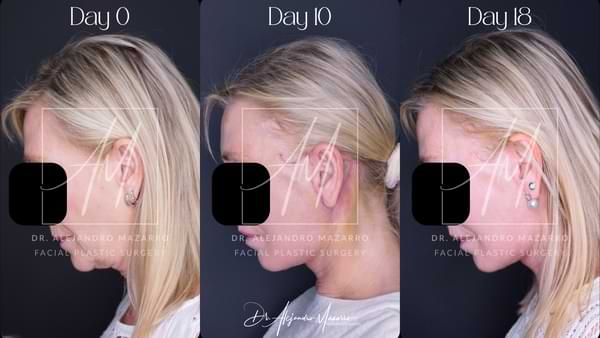
Our specialists are just a click away. Schedule your initial consultation and receive a treatment plan tailored specifically for you.
Am I a candidate for the Deep Plane Lift?
The Deep Plane Lift is not a suitable surgery for everyone, so it is important to make an initial consultation with Dr. Alejandro Mazarro to assess the options.
Below, we explain the key criteria to determine if you are a good candidate for this procedure, as well as important information to consider before making your decision.
Some of the conditions that make a person a good candidate for the Deep Plane Lift are:
- Flaccidity in the cheeks and neck.
- Loss of definition in the jaw line.
- Sagging of facial tissues causing a tired or aged appearance.
- Patients seeking natural results, without the typical “stretched face” look of other facelift techniques.
The ideal age group for this procedure is usually between 45 and 60 years old in women, and between 55 and 65 years old in men., however, more and more people in their 40s and 50s are seeking consultation to refresh their appearance before significant tissue sagging occurs. In any case, it is important to individualize each case, since the final decision will depend on the facial structure and the state of aging of each person.
If you are considering a facelift procedure and want long-lasting, natural-looking results while preserving your expression, the Deep Plane Facelift may be the perfect option for you.
The results are longer lasting because the rejuvenation depends not only on skin tightening, but on a complete restoration of the facial anatomy.
Frequently Asked Questions about the Deep Plane Lift
Los resultados del lifting plano profundo pueden durar unos 10 años, dependiendo de factores individuales como el envejecimiento natural y los cuidados postoperatorios.
Most patients experience some discomfort in the first few days, but the pain is manageable with medical indications. Swelling and bruising are completely normal, and will diminish with time.
Generally, you will be able to return to 100% of your daily activities within two to three weeks after surgery. However, it is important to avoid strenuous physical activity during the month following surgery.
The procedure is performed under general anesthesia or deep sedation, depending on the patient’s individual needs and the surgeon’s recommendation.
Yes! One of the advantages of the Lifting Deep Planeis that it can be performed on patients who have previously undergone less invasive treatments, such as dermal fillers or thread lifts.. Sin embargo, es importante la evaluación previa del cirujano, por ello es importante que informes sobre cualquier procedimiento facial previo.
Surgery time can vary between 4 and 5 hours, depending on the extent of the areas to be treated and the individual characteristics of the patient.
The price of a facelift varies fundamentally depending on the technique, the surgeon’s experience and the scope of the procedure. In the case of a traditional facelift, the price can be around €8,000 when performed by less experienced professionals, although the average is usually between €12,000 and €14,000. In Spain, a Deep Plane facelift in expert hands is usually priced from 21,000 € (from 60,000 €). £ in the United Kingdom and $90,000 in the United States), although this value may increase if complementary procedures (neck, eyelids, lip lift, etc.) are required.